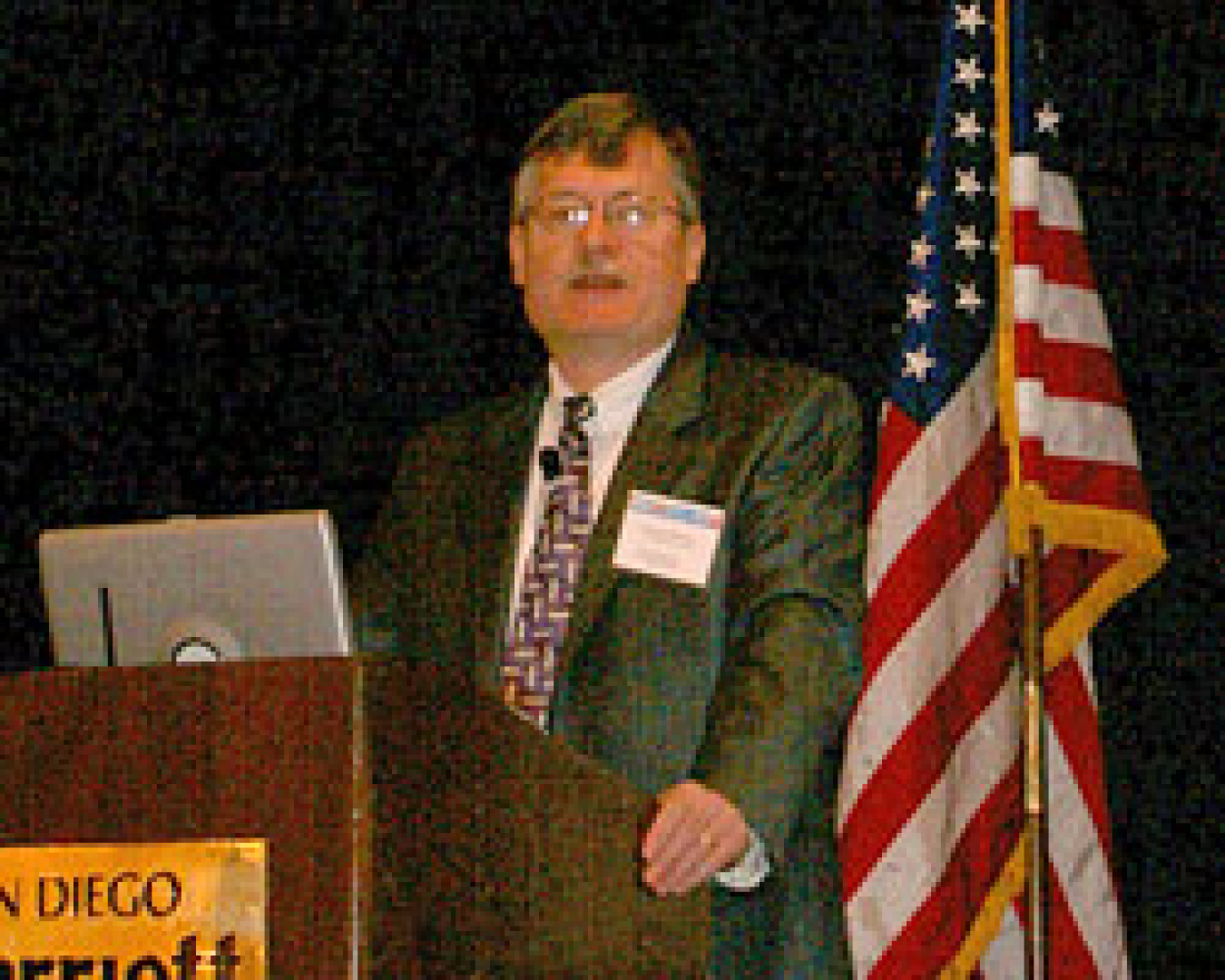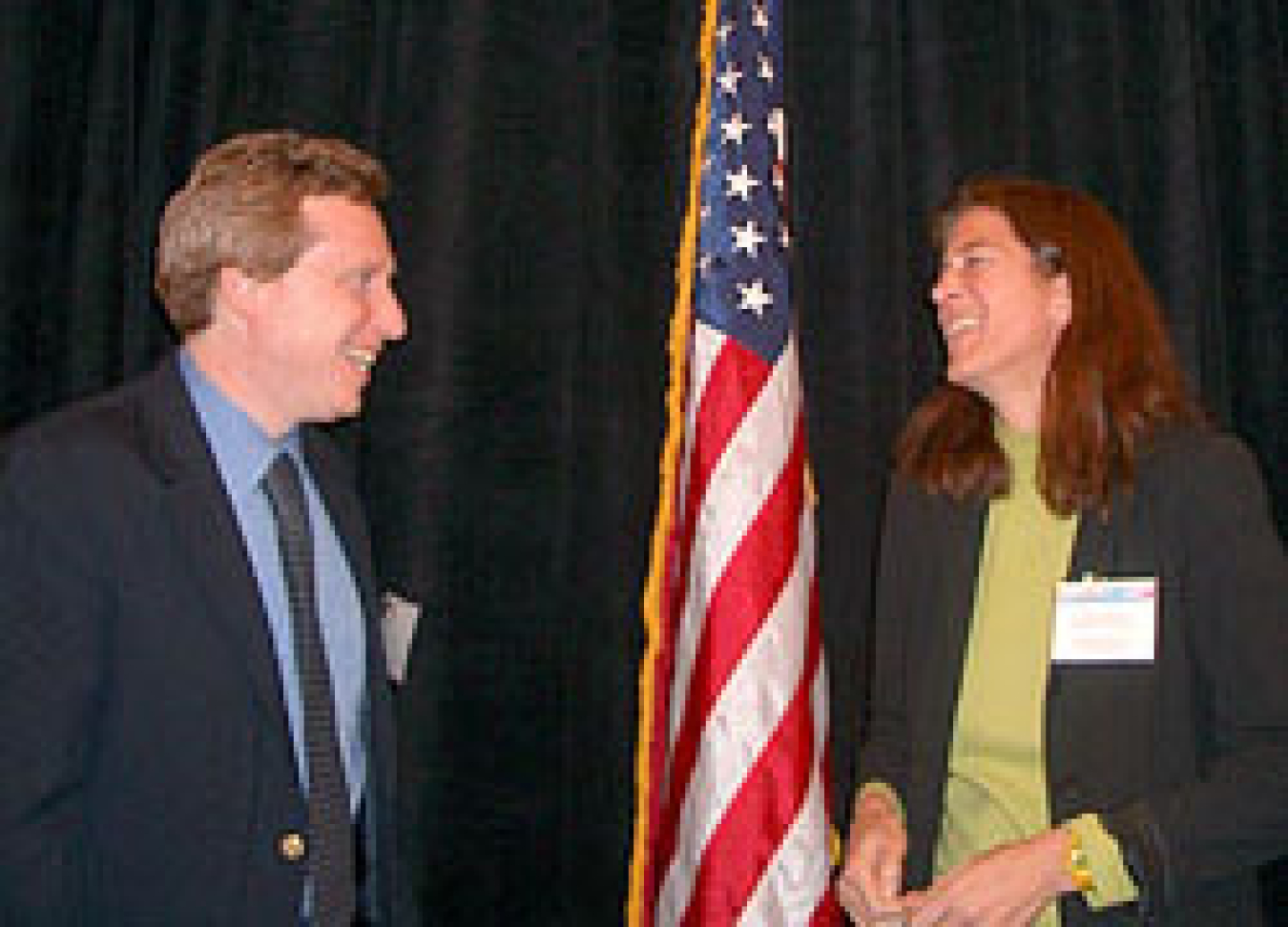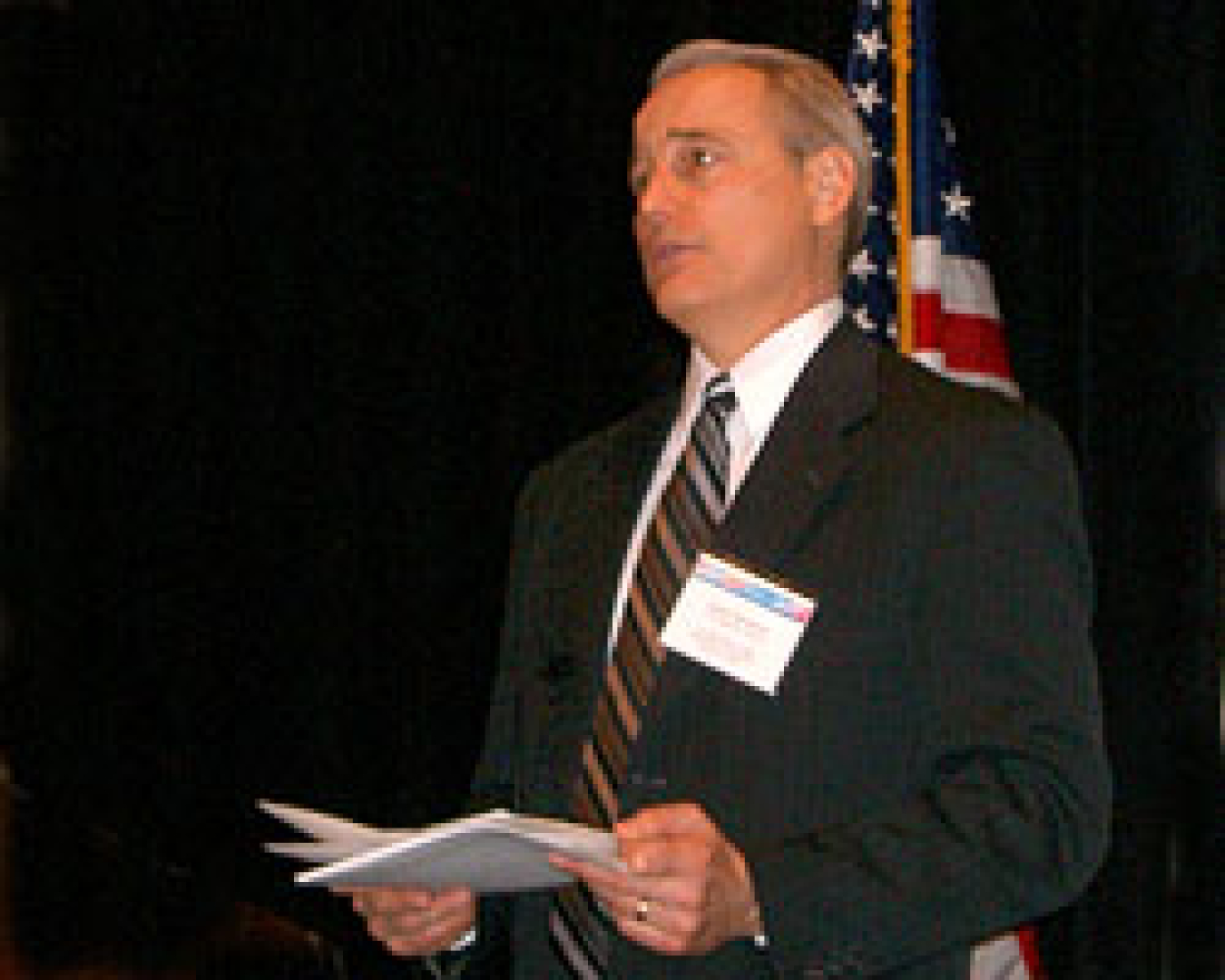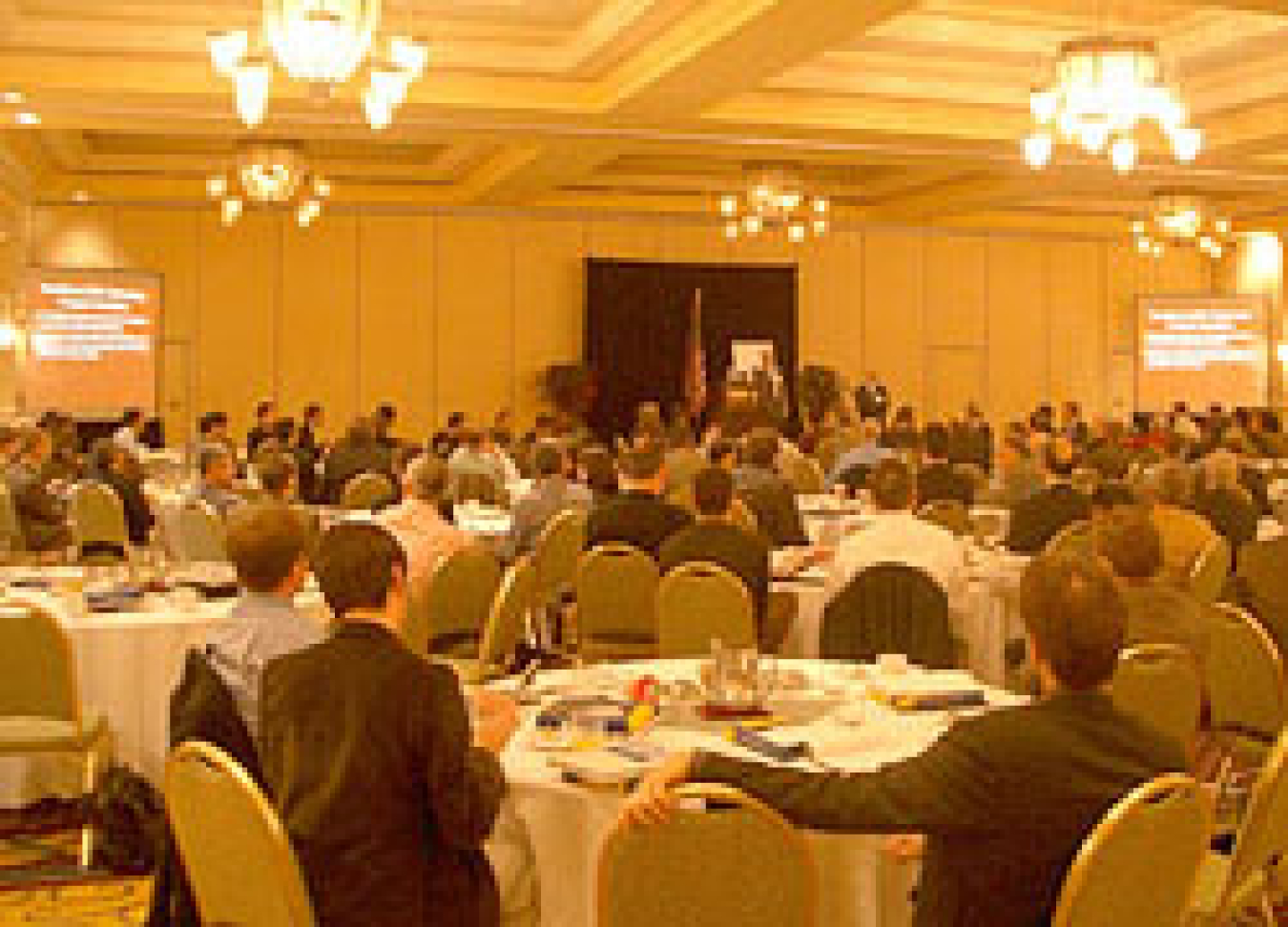
Building Technologies Office Manager Michael McCabe welcomed over 170 participants to the 2005 DOE Solid-State Lighting Workshop.
Technology leaders from industry, research institutions, universities, and national laboratories gathered in San Diego, California, on February 3 and 4, 2005 to attend a workshop focused on advancing solid-state lighting (SSL) technology from the laboratory to the marketplace. Sponsored by the U.S. Department of Energy (DOE) Building Technologies Office, the workshop provided an interactive forum for shaping and prioritizing DOE's SSL research and development activities.
This workshop represented the second annual meeting of the Department's program to accelerate advances in SSL technology. Guided by a Government-industry partnership, DOE's mission is to create a new, U.S.-led market for high-efficiency, general illumination products through the advancement of semiconductor technologies, to save energy, reduce costs, and enhance the quality of the lighted environment.

Keynote speakers Kevin Dowling and Sheila Kennedy provided a humorous and thought-provoking look at the past, present, and future of lighting.
Building Technologies Office Manager Michael McCabe kicked off the workshop, welcoming over 170 participants to San Diego and emphasizing the significant energy-saving potential of solid-state lighting. In the keynote address, Kevin Dowling from Color Kinetics and Sheila Kennedy from Kennedy & Violich Architecture highlighted the challenges and opportunities currently facing SSL researchers and developers, noting that the potential forms and functions for SSL technology are not yet fully known.
DOE SSL Program Updates

DOE SSL Program Manager James Brodrick provided a breakdown of current DOE projects and funding for SSL Core Technology Research and Product Development.
James Brodrick, DOE SSL Program Manager, provided an overview of the SSL program and status of current R&D activities. C. Edward Christy from the National Energy Technology Laboratory detailed the program organization and operational plan. The Department's SSL R&D program features two concurrent, interactive pathways:
- Core Technology Research, conducted primarily by academia, national laboratories, and research institutions
- Product Development, conducted primarily by industry
The program plan also includes innovative intellectual property provisions and a SSL Partnership that will provide significant input to shape the Core Technology Research priorities. In 2004, the Department competitively selected a SSL Partnership composed of manufacturers and allies that are individually or collaboratively capable of manufacturing and marketing the desired SSL products. On February 2, the Department and the Next Generation Lighting Industry Alliance signed a Memorandum of Agreement to initiate this partnership.

Paul Gottlieb, DOE Assistant General Counsel for Technology Transfer and Intellectual Property, answered questions about proposed IP provisions.
Todd Graves from GE Global Research provided an overview of the Partnership's origins, membership, purpose, and objectives. Paul Gottlieb, DOE Assistant General Counsel for Technology Transfer and Intellectual Property, followed with a discussion on intellectual property and the proposed exceptional circumstances for Core Technology Research. At lunchtime, Wendy Davis from the National Institute of Standards and Technology gave a presentation on the "Complexities of Color," which explored the impact of human factors on color rendering quality and lighting.
Presentations on Current DOE-Funded SSL Projects
Day 1 of the workshop also included brief presentations on current DOE-funded SSL projects. Presenters for each of the current projects provided an overview of the project team, R&D objectives, project elements, and technology. These presentations provided attendees with a snapshot of DOE's current project portfolio and provided a useful reference point for the Day 2 discussion and prioritization for future R&D topic areas. The 2005 Project Portfolio provides more detail on each of the current DOE SSL projects.
Discussion and Prioritization of DOE's Future SSL R&D Agenda
On Day 2 of the workshop, participants reviewed, discussed, and prioritized more than 65 research and development tasks and subtasks within the DOE SSL R&D agenda. The R&D agenda is divided into four groups: Inorganic SSL Core Technology Research, Inorganic SSL Product Development, Organic SSL Core Technology Research, and Organic SSL Product Development. Within each of the four grouped topic areas, the R&D agenda is broken down by tasks and subtasks. Participants provided input to clarify the task and subtask objectives, wording, and structure, and then voted on the tasks and subtasks. A summary of the group updates and ranking of tasks and subtasks is available for download. The complete workshop report will be posted in March. This workshop feedback is one of the main sources used by DOE in the development of future SSL solicitations.

